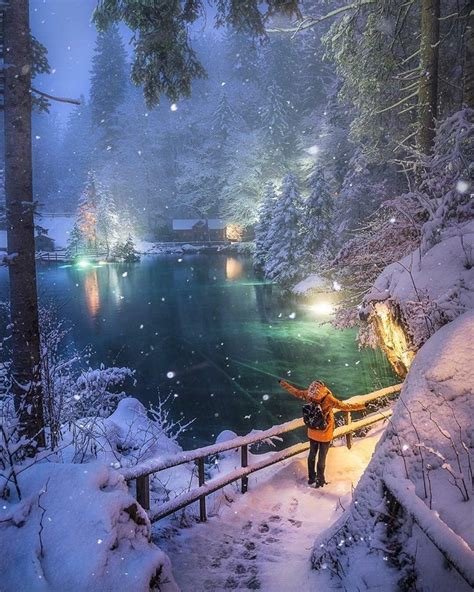Capturing Stunning Flower Photography: Tips for Creating Striking Images
Flower photography is a captivating and rewarding pursuit for both amateur and professional photographers. Whether you’re looking to capture the vibrant colors of a blooming garden or the delicate intricacies of a single blossom, mastering the art of flower photography requires a combination of technical skill and artistic vision. In this blog post, we’ll explore essential tips and techniques for creating stunning flower images that truly stand out. From understanding the basics of flower photography and choosing the right equipment to mastering composition techniques and utilizing different lighting methods, we’ll cover everything you need to know to elevate your flower photography game. We’ll also delve into the exciting world of macro photography and creative perspectives, as well as share post-processing tips to enhance the impact of your flower photographs. Get ready to unleash your creativity and capture the beauty of flowers like never before!
Understanding the Basics of Flower Photography
Flower photography is a beautiful and rewarding art form that allows you to capture the stunning beauty of nature. Whether you are a beginner or an experienced photographer, understanding the basics of flower photography is essential to capturing breathtaking images of your favorite blooms.
One of the most important aspects of flower photography is composition. Understanding how to frame your subject, use leading lines, and create visual balance can take your flower photographs to the next level. Additionally, lighting plays a crucial role in flower photography. Learning how to utilize natural light, diffused light, or artificial lighting can enhance the colors and textures of the flowers in your images.
Another important factor to consider is equipment. Choosing the right camera, lens, and accessories can greatly impact the quality of your flower photographs. Furthermore, macro photography is a popular technique in flower photography that allows you to capture the intricate details and textures of flowers up close.
Finally, post-processing is essential for enhancing the impact of your flower photographs. Learning how to use editing software to adjust color, contrast, and sharpness can help you create stunning and captivating flower images.
Choosing the Right Equipment for Flower Photography
When it comes to capturing stunning flower photographs, having the right equipment is essential. The camera and lens you use can greatly impact the quality of your images. It’s important to choose a camera with a high resolution sensor and a good dynamic range to capture the intricate details and vibrant colors of flowers. Additionally, selecting a macro lens is key for close-up shots, allowing you to capture the fine details and textures of the flowers.
Another important piece of equipment for flower photography is a tripod. This ensures that your camera is stable, especially when shooting in low light or using slow shutter speeds. A good tripod also allows you to compose your shots precisely and make fine adjustments to the framing.
Utilizing a remote shutter release can also be beneficial to prevent camera shake and ensure sharp images. It allows you to trigger the camera without physically touching it, which is especially useful when shooting in macro mode or in windy conditions.
Lastly, consider adding filters to your kit, such as polarizing or neutral density filters, to enhance the colors and control the exposure of your flower photographs. These accessories can help you achieve professional-looking results and elevate your flower photography to the next level.
Mastering Composition Techniques for Captivating Flower Images
Composition is a crucial element in creating captivating flower images. By understanding and applying different composition techniques, you can elevate the visual impact of your photographs and effectively capture the beauty of flowers. One important composition technique is the rule of thirds, which involves dividing the image frame into nine equal parts using two horizontal and two vertical lines. Placing the key elements of the flower, such as the focal point or the stem, along these lines or at their intersection points can create a more visually appealing and balanced image.
Another essential composition technique for flower photography is using leading lines. By incorporating natural or man-made lines in the environment, such as the curve of a stem or a pathway in a garden, you can direct the viewer’s gaze towards the main subject – the flower. This technique helps to guide the viewer’s eye through the image and adds depth and visual interest to the photograph.
Furthermore, experimenting with different viewpoints and perspectives can add a unique dimension to your flower images. Instead of always shooting flowers at eye level, consider getting down low or shooting from above to capture flowers from unconventional angles. This creative approach can result in more dynamic and engaging compositions, making your flower photographs stand out from the rest.
Lastly, don’t be afraid to explore the use of negative space. Negative space, which refers to the empty or blank areas in an image, can be effectively used to draw attention to the flower and create a sense of tranquility and simplicity. By carefully composing your shot to include negative space, you can enhance the impact and visual appeal of your flower images, allowing the beauty of the flower to take center stage.
Utilizing Different Lighting Techniques to Enhance Flower Photography
When it comes to flower photography, one of the most crucial elements to consider is the lighting. The right lighting can make a significant difference in the quality and impact of your flower images. There are several different lighting techniques that can be used to enhance the beauty of flowers and create captivating photographs.
One effective lighting technique for flower photography is using natural light. Whether it’s the soft, golden light of the early morning or the warm, glowing light of the golden hour in the evening, natural light can bring out the natural colors and textures of flowers, creating stunning images.
Another technique is using diffused light. This can be achieved by shooting on an overcast day or using a diffuser to soften and spread the light. Diffused light helps to eliminate harsh shadows and creates a soft, even illumination, perfect for highlighting the delicate details of flowers.
For a more dramatic effect, photographers can experiment with backlighting. By positioning the light source behind the flowers, backlighting can create a beautiful, ethereal glow around the petals, adding a dreamy and enchanting quality to the photographs.
Capturing the Beauty of Flowers through Macro Photography
When it comes to flower photography, one technique that can really make your images stand out is macro photography. This technique allows you to capture the intricate details of a flower, from the delicate petals to the tiny stamens and pistils. By using a macro lens, you can get up close and personal with your subjects, creating stunning, larger-than-life images that showcase the unique beauty of each flower.
One of the key things to keep in mind when practicing macro photography is the importance of depth of field. Because you’re shooting at such close range, even the smallest aperture can result in a shallow depth of field, which can be both a blessing and a curse. On one hand, a shallow depth of field can create a beautiful, dreamy effect, with the subject in sharp focus against a blurred background. On the other hand, it can be quite challenging to achieve sharp focus on the entire flower, especially if it has multiple layers of petals or intricate details.
Another important consideration when capturing the beauty of flowers through macro photography is lighting. Because you’re working at such close range, it’s crucial to pay attention to how the light falls on your subjects. Soft, diffused light is often the best option for macro photography, as it can help to minimize harsh shadows and bring out the natural colors and textures of the flowers. You can achieve this type of lighting by shooting on overcast days or using a diffuser to soften the sunlight.
Finally, post-processing can play a key role in enhancing the impact of your macro flower photographs. By using tools such as sharpening and contrast adjustment, you can bring out the fine details and textures of the flowers, making them truly stand out in your images. Additionally, you can experiment with cropping to create unique compositions that draw the viewer’s eye to specific elements of the flower.
Experimenting with Creative Perspectives for Unique Flower Shots
When it comes to flower photography, there are countless techniques to experiment with in order to capture unique and captivating shots. One of the most effective ways to achieve this is by exploring creative perspectives that go beyond the traditional front-on or top-down views. By thinking outside the box and experimenting with different angles and viewpoints, photographers can bring a fresh and interesting approach to their flower images.
One approach to experimenting with creative perspectives is to get down low and shoot the flowers from ground level. This can create a more immersive and captivating view of the flowers, bringing the viewer closer to the natural world and allowing for a unique perspective that is often overlooked.
Another creative perspective to explore is capturing the flowers from above, whether it’s by climbing a ladder or utilizing a drone. This can provide a bird’s eye view of the flowers, showcasing their natural patterns and shapes in a way that is visually striking and unexpected.
Additionally, photographers can experiment with incorporating other elements into their flower shots, such as using reflections in water or positioning the flowers against a dramatic backdrop. These creative techniques can add depth and interest to the images, elevating them from simple snapshots to compelling works of art.
Post-Processing Tips to Enhance the Impact of Flower Photographs
After a successful flower photography session, the next step is to enhance the captured images through post-processing. Post-processing plays a crucial role in bringing out the full potential of a photograph, especially when it comes to flower photography. One of the most important tips for enhancing the impact of flower photographs during post-processing is to pay attention to the color balance. Adjusting the color balance can make the colors of the flowers appear more vibrant and true to life. It can also help in correcting any color casts that may have occurred during the shooting process.
Another important post-processing tip for enhancing the impact of flower photographs is to make use of sharpening and noise reduction tools. Sharpening the image can bring out intricate details of flowers such as the delicate patterns on petals and the texture of leaves. On the other hand, using noise reduction can help in minimizing any digital noise that may have appeared in the image, resulting in a cleaner and more polished look.
Furthermore, utilizing the clarity and contrast adjustments can significantly enhance the visual impact of flower photographs. Increasing the clarity can bring out the fine details in the flower subjects, making them appear more three-dimensional and lifelike. Adjusting the contrast can help in creating a more dramatic and compelling image, especially when it comes to highlighting the intricate shapes and textures of the flowers.
Lastly, one of the key post-processing tips for enhancing the impact of flower photographs is to experiment with cropping and composition. By utilizing cropping techniques, photographers can refine the composition of their flower images, focusing on the most visually captivating elements. This can help in creating more impactful and aesthetically pleasing photographs that truly showcase the beauty of the flowers.
Frequently Asked Questions
What are the basic tips for flower photography?
Understanding the Basics of Flower Photography
How to choose the right equipment for flower photography?
Choosing the Right Equipment for Flower Photography
What are the composition techniques for captivating flower images?
Mastering Composition Techniques for Captivating Flower Images
What lighting techniques can enhance flower photography?
Utilizing Different Lighting Techniques to Enhance Flower Photography
How to capture the beauty of flowers through macro photography?
Capturing the Beauty of Flowers through Macro Photography
What are some creative perspectives for unique flower shots?
Experimenting with Creative Perspectives for Unique Flower Shots
What are some post-processing tips to enhance flower photographs?
Post-Processing Tips to Enhance the Impact of Flower Photographs






